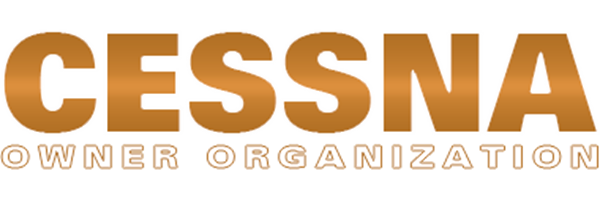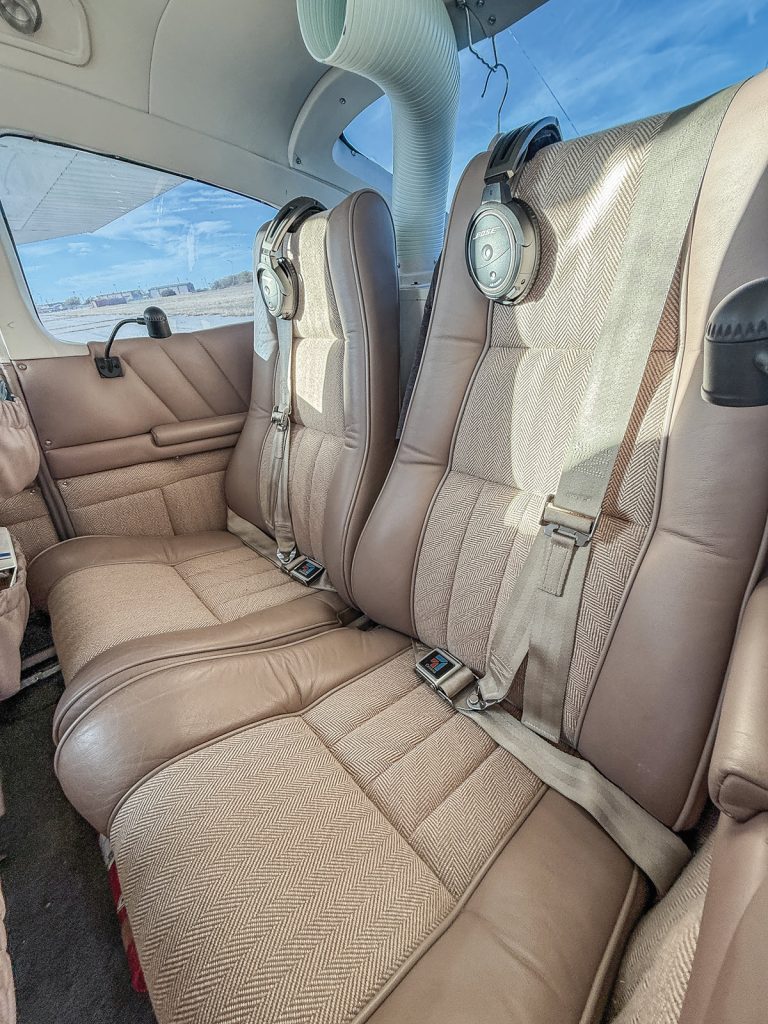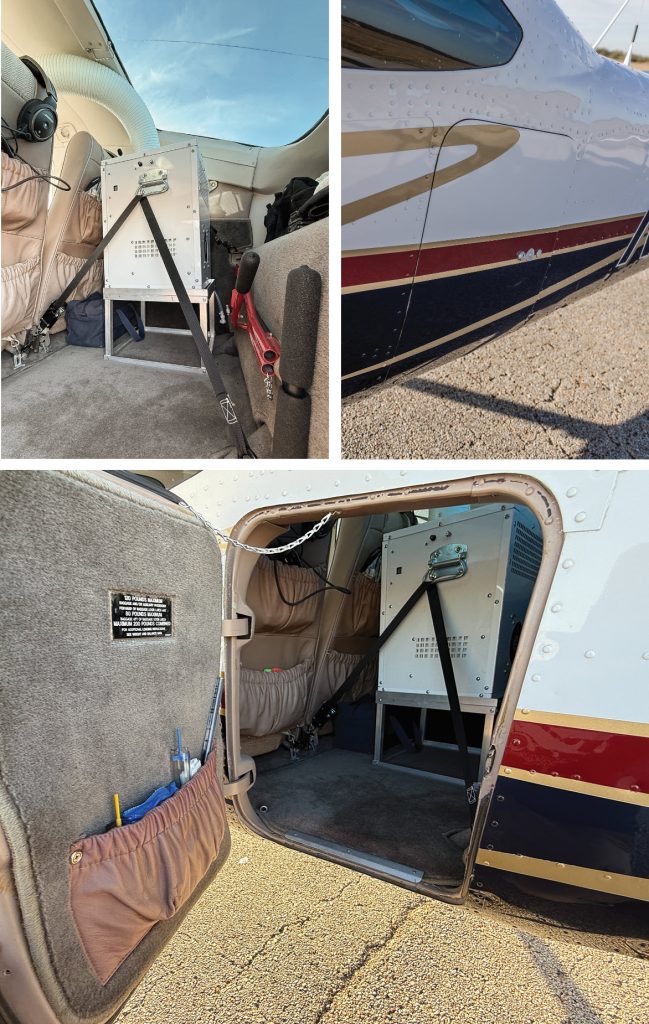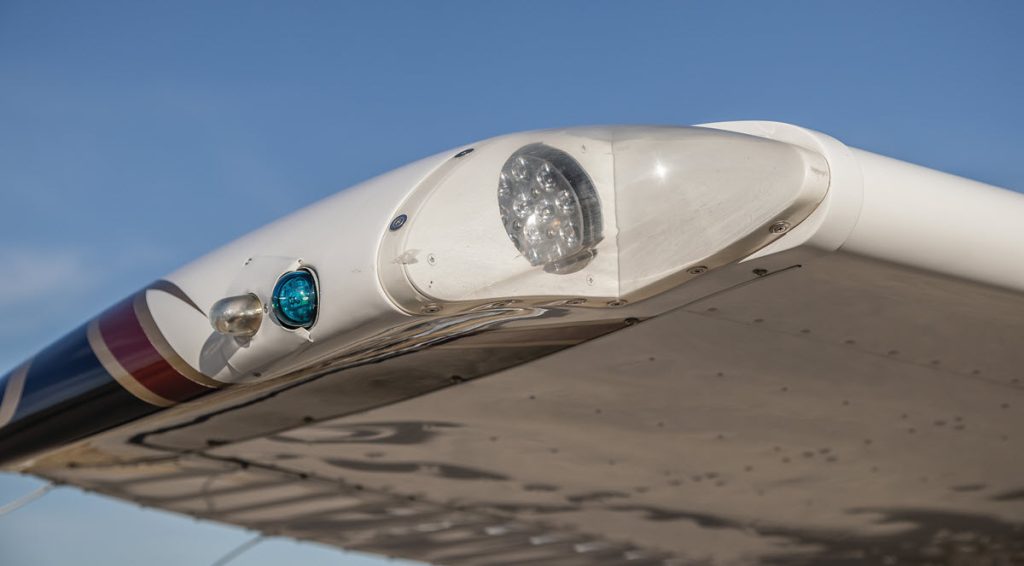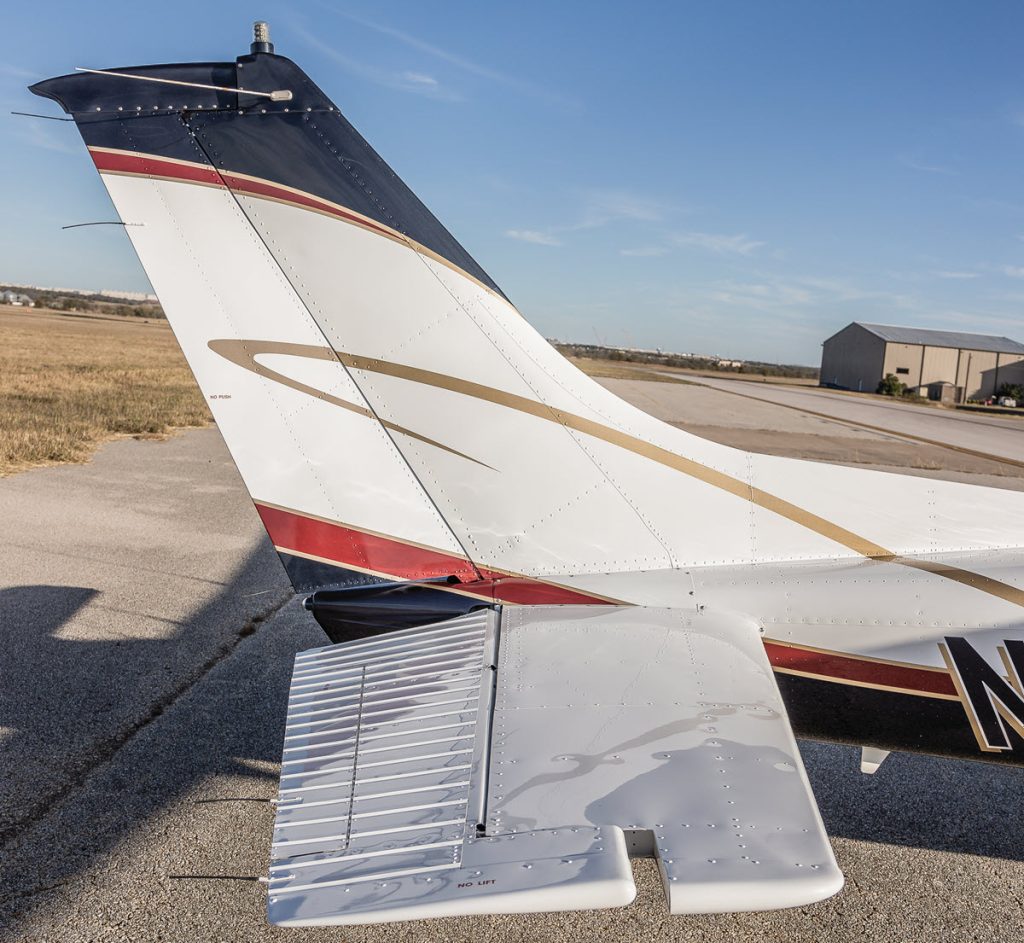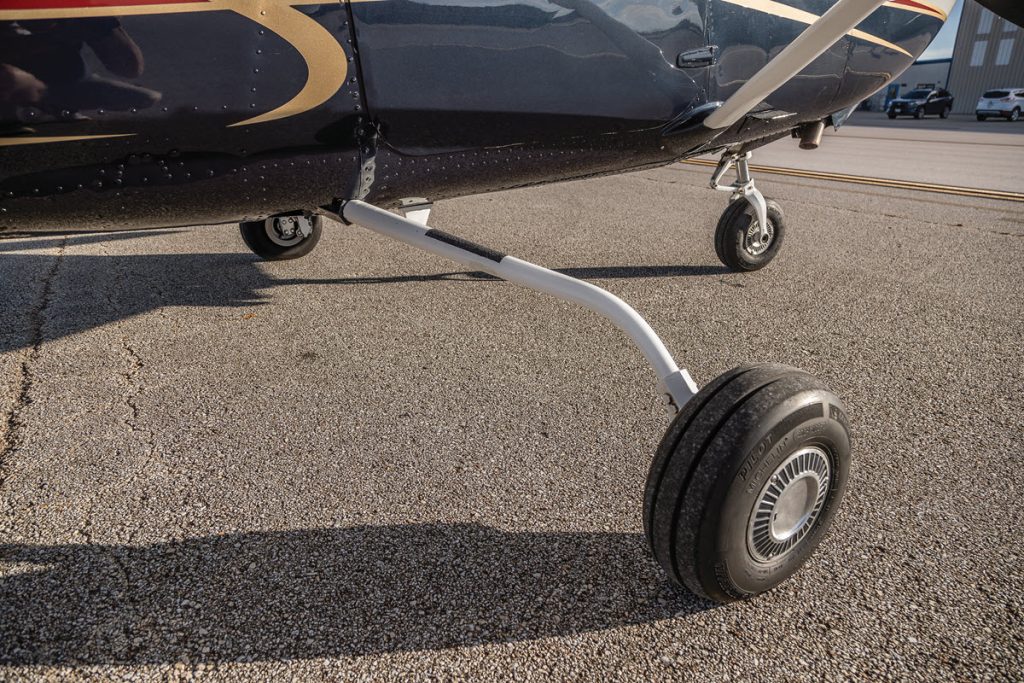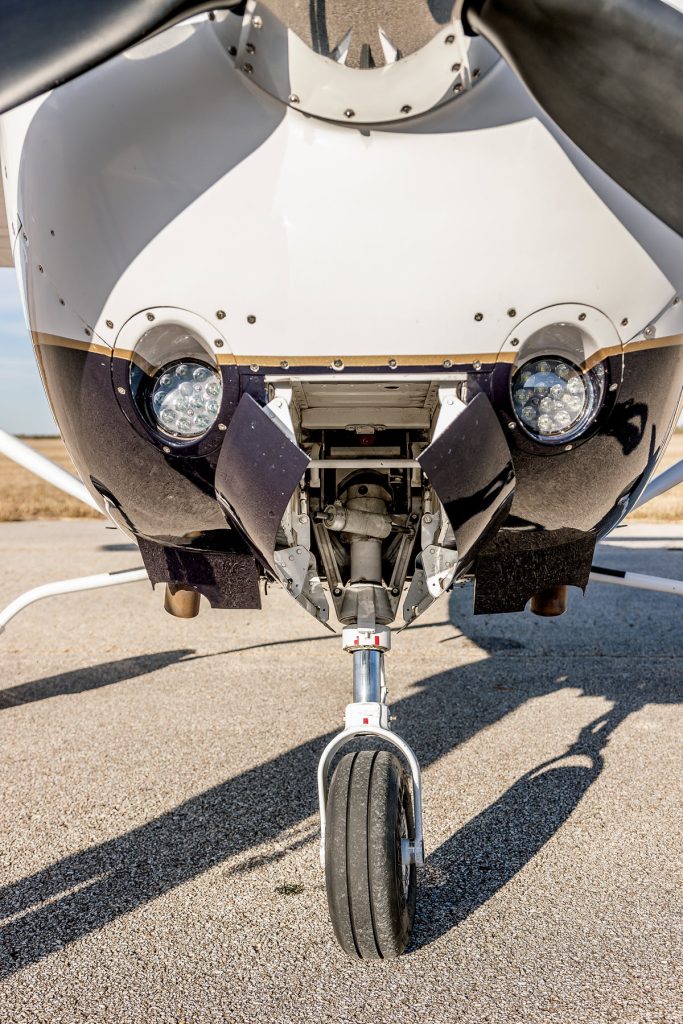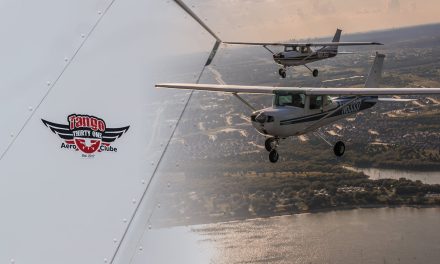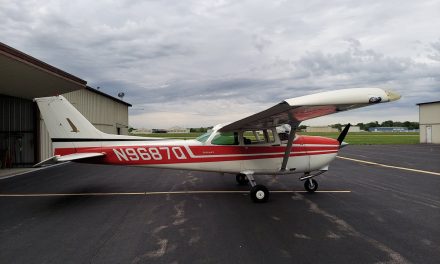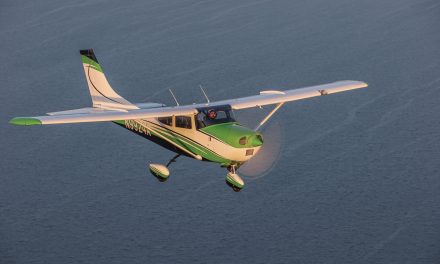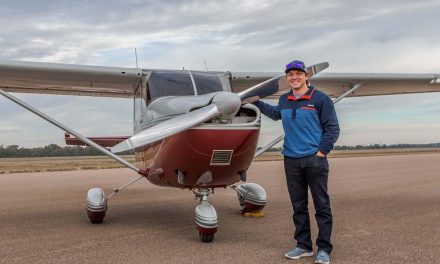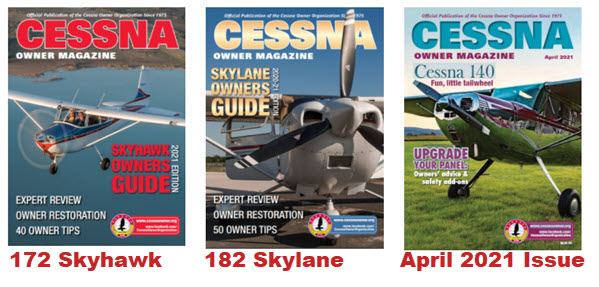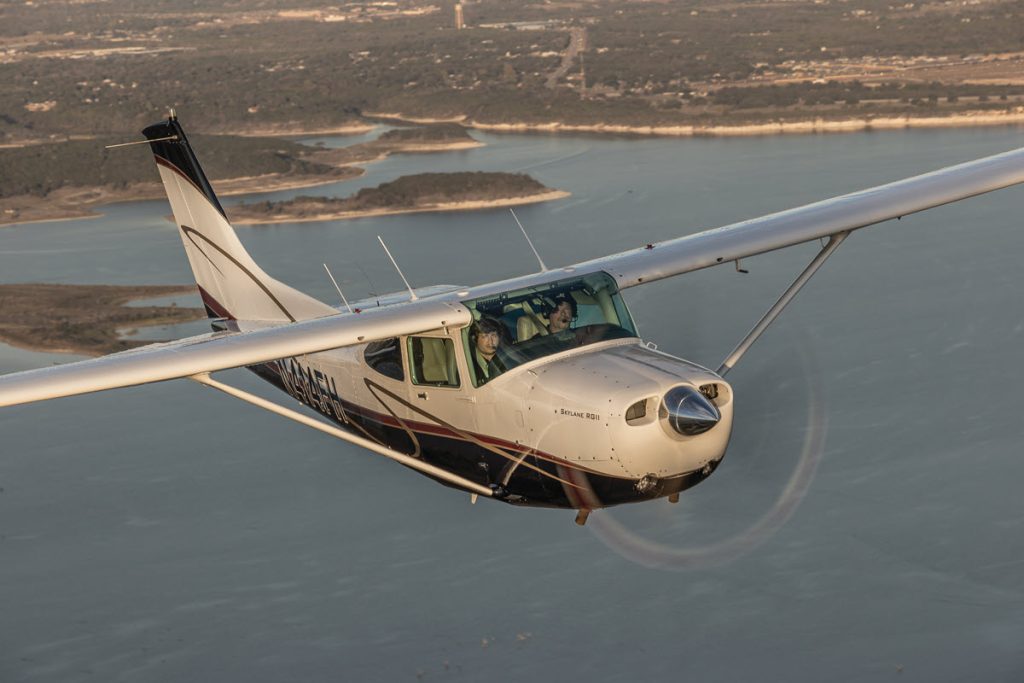
By Michelle Adserias
Like many other general aviation pilots, Steve Sewell’s interest in general aviation began with a family member who recounted stories about his aviation ventures in the military. Steve’s father flew both helicopters and the L-19 in the Army for many years. The L-19, also known as the Cessna O-1 Bird Dog, was first drafted into service during the Korean War as a liaison and observation aircraft. It also served through the Vietnam War before being retired in the 1970s.
His desire to fly was further fostered by his younger brother’s pursuit of his private pilot certificate (PPC). While his brother, Ben, was building hours, Steve often hopped in the plane and flew along. By the time Ben began his career as a professional pilot, Steve was hooked. He earned his certification in 1997 at Andrau Airpark in Houston, Texas. “My father’s old stories had my interest, but flying with my brother opened up the world of actually flying GA.”
When the time came for him to purchase his own airplane, a Cessna seemed the obvious choice. In addition to all the good things he heard from his father about the L-19, Steve had flown a Cessna R182 in the flying club he belonged to. He already knew the aircraft and its capabilities. He set out looking specifically for that model and he found what he was looking for in N414FH, a 1981 Cessna R182 — the retractable gear Skylane.
The Skylane is ideally suited to Steve’s needs. He flies from the Houston area to West Texas a couple of times each month. The time efficiency and convenience of being able to fly himself is hard to put a price tag on. He lives just 10 miles from the airport. “I love being able to leave the house at 7:00 a.m., fly two and half hours to West Texas, spend a couple of hours checking on a project and getting lunch, then flying two and a half hours back and being home by 4:00 p.m. the same day.”
Each of those trips is about 350 miles one-way. Last year Steve logged over 175 hours.
N414FH: Ready to Fly
When Steve purchased N414FH, it was in excellent condition. The previous owner, who piloted this plane for nearly 25 years, took excellent care of the aircraft and made numerous upgrades through the years. The interior had been renovated by AIR MOD in Ohio. It had a new paint job. Tech Aero had given it a panel upgrade with Garmin avionics. And just a year before Steve bought this airplane, Air Plains Services had installed a factory-new Lycoming 260 hp, IO-540 conversion. The engine only had 66 hours on it. “Air Plains work and customer service are outstanding,” Steve noted.
Still, there were a few things Steve changed in the aircraft since taking ownership. He upgraded the GNS 430 to a GTN650xi. At the same time, he also upgraded from the GTN 750 to the newer 750xi.
Because Steve takes extended journeys in this aircraft, he added air-conditioning to ward off the Texas heat. He added an Arctic Air 28-volt freon unit and upgraded to a 95-amp alternator to help it run as effectively as possible. Though he considers it a non-negotiable in his Cessna R182, Steve is willing to forego it in his American Champion Citabria, which he takes on shorter ventures.
The only change Steve is considering down the road is changing out the 55X autopilot for the GFC500.
The Cessna R182 is a well-supported aircraft so parts availability has not been a problem, though the brackets he needed for an alternator upgrade were rather “spendy.” Furthermore, this aircraft has relatively few AD’s which helps keep maintenance costs reasonable. When looking for parts, Steve turns to Aircraft Spruce and Chief Aircraft Parts. He also seeks out repair and maintenance shops with a thorough understanding of retractable landing gear.
N414FH has proved an excellent choice for Steve. It’s very comfortable for long trips. It has over five hours of endurance plus reserves. And with the Air Plains engine, the flap gap seals, and the retractable gear it regularly trues at 158-160 knots at 8000-9000 feet and burns about 12.5-12.8 gph (depending on the temperatures and altitude).
Overall, he finds it fairly economical for a retractable gear aircraft. Insuring this airplane has been fairly reasonable, as well. How much does it cost to keep his Skylane flying smoothly? “I purposely do not track every dollar spent. I like to think it’s less expensive than my wife’s horses.” Steve’s wife, Devan, has always been very supportive of his addiction to flight, though she prefers to keep her feet on the ground.
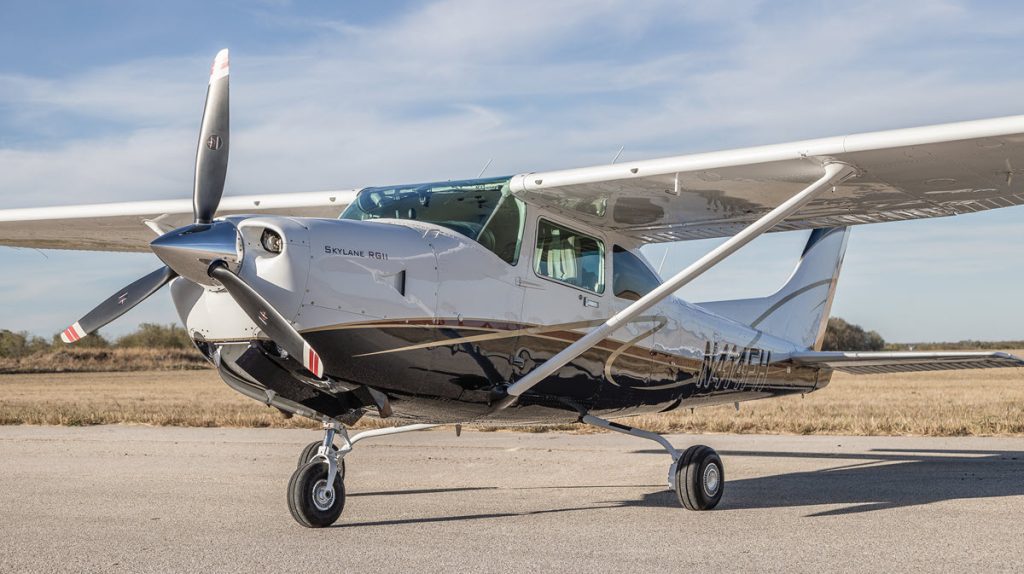
Looking Back, Looking Forward
Steve’s brother now flies for a major airline and hadn’t flown general aviation since the early 2000’s. So, after over 20 years, they once again climbed in the cockpit together last summer and flew from Texas to Wisconsin for AirVenture. The cross-country flight for their first visit to Oshkosh coupled with the time they were able to spend together made for a “fantastic trip.” In fact, they’re planning to make the journey again in 2025.
Because he enjoys flying cross-country, Steve plans to visit “all corners of the country” as the opportunities present themselves – including Alaska – something he’s been thinking about for many years.
When long jaunts aren’t possible, Steve enjoys flying into the Airport Diner in Fredericksburg, Texas (T82) for a delicious meal at their classic, 1940s-style diner.
Pilots fly for different reasons, which is why we talk mission for one’s aircraft. For some, flying is an enjoyable hobby. They fly for the sheer pleasure and enjoy regularly meeting up with friends at fly-in diners for a tasty meal and good company. Others, like Steve, mix business and pleasure. Their airplanes are both a source of enjoyment and a valuable tool that helps them make the most of life’s moments.
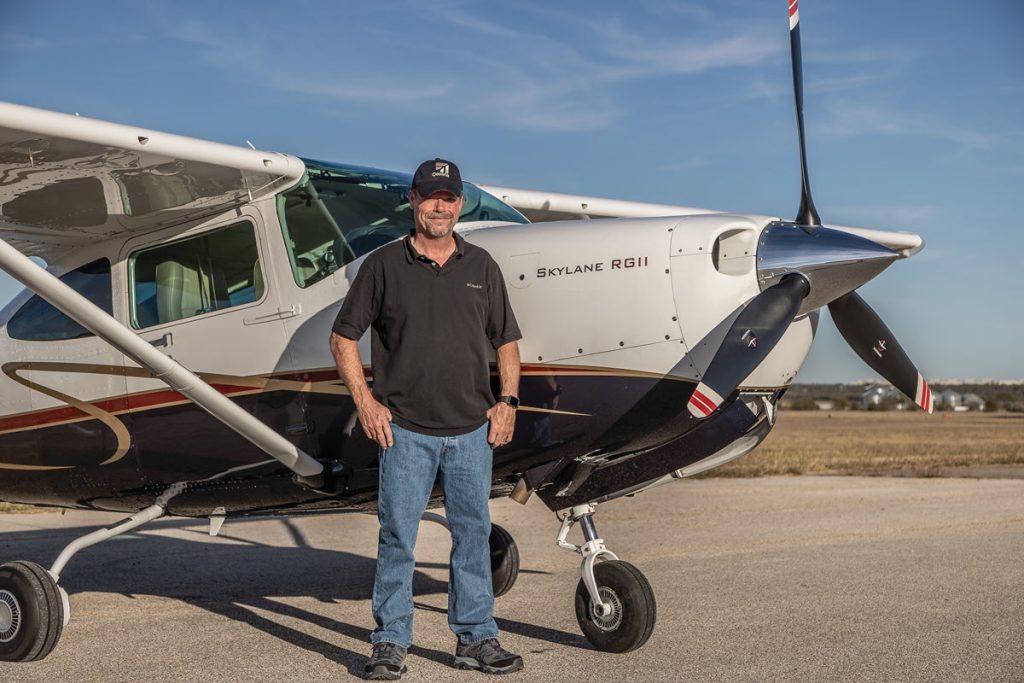
Have a website login already? Log in and start reading now.
Never created a website login before? Find your Customer Number (it’s on your mailing label) and register here.
JOIN HERE
Still have questions? Contact us here.
